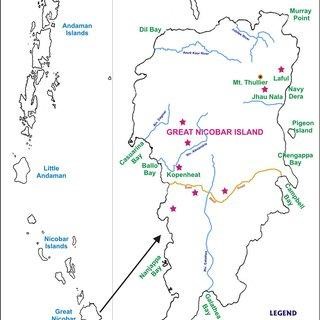Shompen Tribe Faces Challenges Amid Development on Island
Why in the news?
The Shompen, an isolated tribe in Great Nicobar Island, confronts threats to their traditional lifestyle from a massive development project, though they made strides in political participation by voting in the recent Lok Sabha elections.
About Shompen Tribe:
- The Shompen are one of India’s most isolated Indigenous communities, residing in the dense rainforests of Great Nicobar Island.
- They have preserved their nomadic, hunter-gatherer lifestyle, relying on the island’s rich biodiversity for sustenance.
- With deep knowledge of their ecosystem, they have lived in harmony with nature for centuries.
Challenges Faced by the Shompen
- The Great Nicobar Development Project proposes large-scale infrastructural changes, including the construction of a mega-port, an international airport, and other facilities.
- Experts and activists have expressed concerns that such developments could disrupt the Shompen’s traditional way of life and endanger their survival.
- The community faces external pressures that threaten both their environment and cultural practices.
Steps Towards Inclusion and Preservation
- Despite external threats, the Shompen have made strides towards integration. Seven members of the tribe exercised their voting rights for the first time in the Lok Sabha elections, a historic move for their community.
- Preserving their unique cultural heritage and ensuring the protection of their rights are essential for their future.
- It is vital to balance development with the protection of Indigenous communities, ensuring their voices are heard and their traditions
What are Particularly Vulnerable Tribal Groups (PVTGs)?
- PVTGs Definition: Vulnerable tribal groups with primitive traits, geographical isolation, low literacy, and negative population growth.
- Key Features: Dependent on hunting, pre-agriculture technology, backwardness.
- Current Statistics: 2.8 million PVTGs, 75 tribes across 22,544 villages in 220 districts.
- Major States: Odisha (866,000), Madhya Pradesh (609,000), Andhra Pradesh/Telangana (539,000).
- Source: 2011 Census data.
Sources Referred:
PIB, The Hindu, Indian Express, Hindustan Times





